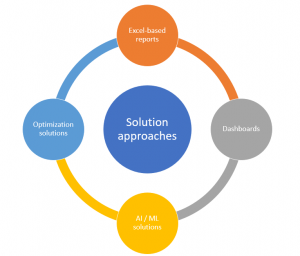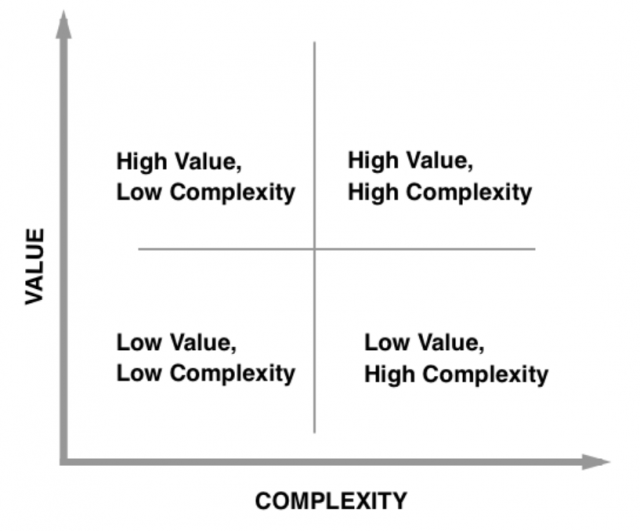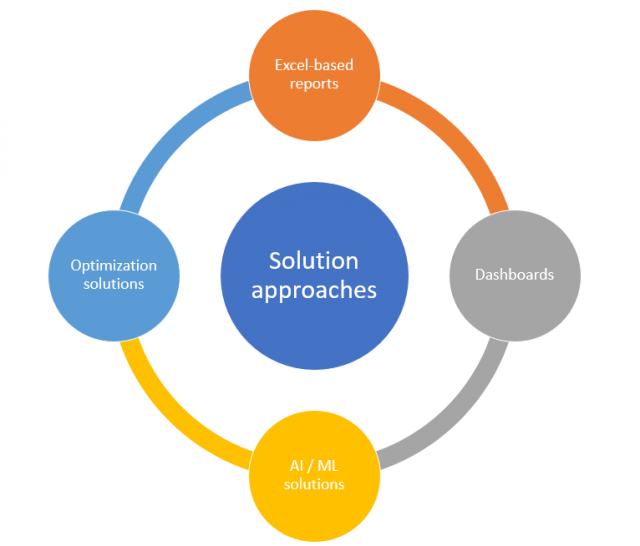
AI / Machine Learning and data science projects are becoming increasingly popular for businesses of all sizes. Every organization is trying to leverage AI to further automate their business processes and gain competitive edge by delivering innovative solutions to their customers. However, many of these AI & machine learning projects fail due to various different reasons. In this blog post, we will discuss some of the reasons why AI / Machine Learning / Data Science projects fail, and how you can avoid them.
The following are some of the reasons why AI / Machine learning projects fail:
- Lack of understanding of business problems / opportunities
- Ineffective solution design approaches
- Lack of data
- Lack of resources
- Lack of model governance
- Lack of data governance
- Lack of value metrics
- Lack of AI / ML strategy
Lets understand each of the above reasons in detail.
Lack of understanding of business problems / opportunities
One of the main reasons why AI / machine learning projects fail is because there is a lack of understanding of business problems or opportunities. This can be due to a number of factors, such as the inexperience of the team, unrealistic expectations, or a lack of domain knowledge. Many times, the problem is not understood correctly due to techniques used to understand the problem. The questioning techniques such as 5-whys, Socratic method proves to be very useful. In addition, design thinking approaches including empathizing with end users and defining the problem also proves to be very useful. The goal should be the following:
- Identify/define the problem using questioning techniques; Questioning techniques such as 5-Whys, Socratic method, Cartesian method of doubt, etc. can help to arrive at the real business problems.
- Once the actual business problem gets identified, you can further break down the problem into sub-problems representing different aspects of the problems using brainstorming techniques. Define these sub-problems appropriately.
- Identify the value that can be realized by solving these sub problems, and, also the complexity (or challenges) associated with solving the problem.
- Prioritize sub-problems using value-complexity matrix. The following picture is a representation of value-complexity matrix:

- Select one or more problems for implementation based on prioritization
Ineffective solution design approaches
Once the problem is understood and prioritized, the manner in which analytical solutions are decided are mostly ad-hoc. There can be a playbook which can help the product managers / data scientists to come up with appropriate solution approaches.
The following represents different analytical solution approaches:
- Excel-based reports
- Dashboards
- Advanced analytics solutions leveraging AI / ML
- Optimization solutions to maximize/minimize the objectives
Read on this post to understand different aspects of playbook – How to identify AI/ Machine learning use cases
Lack of data
Another reason AI / machine learning projects fail is because of a lack of data. This can be due to a number of factors, such as data being too expensive to acquire, data being unavailable, or privacy concerns. In many cases, it is necessary to have a large amount of data in order to train a machine learning model. Without enough data, it is difficult to build a model that generalizes well and performs well on unseen data. Many times, the analytical solutions are built with the data we have. This results in data bias.
In addition to needing a large amount of data, the data must also be of high quality. Poor data quality can lead to inaccurate results and cause machine learning models to perform poorly. Data quality issues can be caused by a number of factors, such as incorrect labels, incorrect values, or missing data.
Lack of resources
AI / machine learning projects can also fail due to a lack of resources. This can be due to a number of factors, such as some of the following:
- Insufficient staffing: An analytics team requires staff members product managers, data visualization experts, analytics engineers, data scientists. At the minimum, you will need good product managers and great data scientists to ensure success of AI / ML projects.
- Inadequate infrastructure: Due to the need of training complex models, one needs expensive infrastructure. The organizations which are unable to invest in infrastructure fail to enable their staff members to build great models. This is where cloud based infrastructure comes to rescue.
- Inadequate funding: Another reason for AI / ML projects failure is inadequate funding. Many times, the AI / ML projects are not given enough budget to be successful.
Lack of Model Governance
One of the important reasons why AI / machine learning (ML) projects fail is failure of analytics team to monitor and retrain the models deployed in production. The product team including data scientists needs to be proactive in monitoring the performance of AI / ML models and retrain them as needed. The AI / ML models are deployed in production need to be monitored on a regular basis for accuracy and performance. This is primarily because data distribution continues to change. In addition, new data representations need to be included in the modeling. And, this can only happen if there is a regular checks.
Lack of Data Governance
Other important reasons why AI / machine learning projects fail is due to lack of data governance. As AI / ML models are built using data, it is important that the data used for training and validation is of high quality. This can be achieved by having a well-defined process for data acquisition, storage, and maintenance. The following are some of the important aspects of data governance which need to be considered:
- Data quality: The data used for training AI / ML models should be of high quality. This can be achieved by having a well-defined process for data cleansing and enrichment.
- Data security: The data used for training AI / ML models should be secure. This can be achieved by having a well-defined process for data security.
- Data privacy: The data used for training AI / ML models should be private. This can be achieved by having a well-defined process for data privacy.
Lack of Value Metrics
Another important reason for AI / ML projects failure is lack of value metrics. In order to ensure success of AI / ML projects, it is important to have a well-defined process for measuring the value of AI / ML models. The following are some of the important value metrics which need to be considered:
- Business impact: The AI / ML project should have a positive impact on the business. This can be measured by looking at the financial impact of the AI / ML project.
- Customer satisfaction: The AI / ML project should improve customer satisfaction. This can be measured by looking at customer feedback data.
- Operational efficiency: The AI / ML project should improve operational efficiency. This can be measured by looking at the process improvement data.
Lack of AI / ML Strategy
Another important reason for AI / ML projects failure is lack of AI / ML strategy. In order to ensure success of AI / ML projects, it is important to have a well-defined AI / ML strategy. The following are some of the important aspects of AI / ML strategy which need to be considered:
- Roadmap: The AI / ML projects implementation roadmap should be aligned with the business goals.
- Maturity model: There needs to be well-defined maturity model for AI / ML projects.
- Organizational change management: The AI / ML projects should be aligned with the organizational changes.
- Processes and policies: There needs to be well-defined processes and policies for AI / ML projects.
- Use cases: The AI / ML use cases should be identified and prioritized.
In order to ensure the success of AI / machine learning (ML) projects, it is important to have adequate funding, lack of model governance, data governance, value metrics and AI / ML strategy. Having a well-defined process for these aspects will help reduce the chances of AI / ML projects failure.
Do you want to learn more? Check out our AI / Machine Learning / Data Science blogs for more interesting articles! Subscribe to our newsletter to get the latest news and updates! Follow us on Twitter for the latest updates!
- Three Approaches to Creating AI Agents: Code Examples - June 27, 2025
- What is Embodied AI? Explained with Examples - May 11, 2025
- Retrieval Augmented Generation (RAG) & LLM: Examples - February 15, 2025
I found it very helpful. However the differences are not too understandable for me